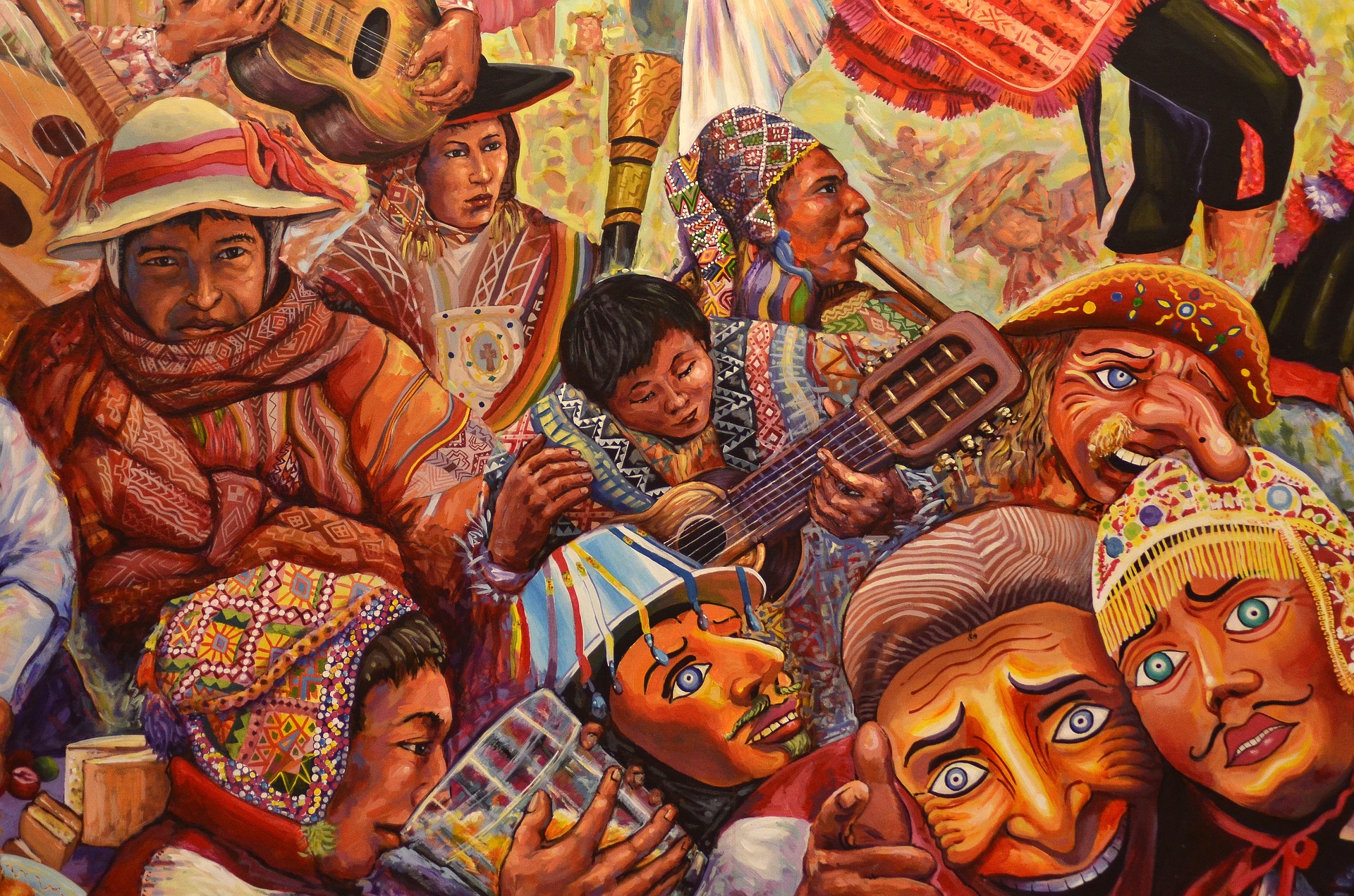
As in other countries in America, the Peruvian culture It is the result of the great mixture of cultural elements of the different peoples that have inhabited what is currently the territory of the Peru.
All these influences can be grouped into two broad categories: on the one hand, that of the Aboriginal peoples and on the other the Spanish and Creoles. To these we must also add the Afro-Peruvian and Asian cultural elements. If anything, the merger has resulted in a rich and diverse national culture that Peruvians claim and of which they feel very proud.
The first Andean civilizations of Peru were born about 5.000 years ago, although they reached their moment of greatest splendor with the chavin culture (around 900 BC) and with the Inca empire, which came to control a vast territory until the arrival of the Spanish in the XNUMXth century.
The European conquest meant the end of the Inca empire but at the same time contributed important cultural elements that successfully took root in Peru, especially in the field of architecture and literature. The Spanish Language was quickly established, although other indigenous local languages such as Quechua they managed to survive.
In the recent history of the country, after the proclamation of the republic, the integration process between indigenous and European elements was consolidated despite some ups and downs until today.
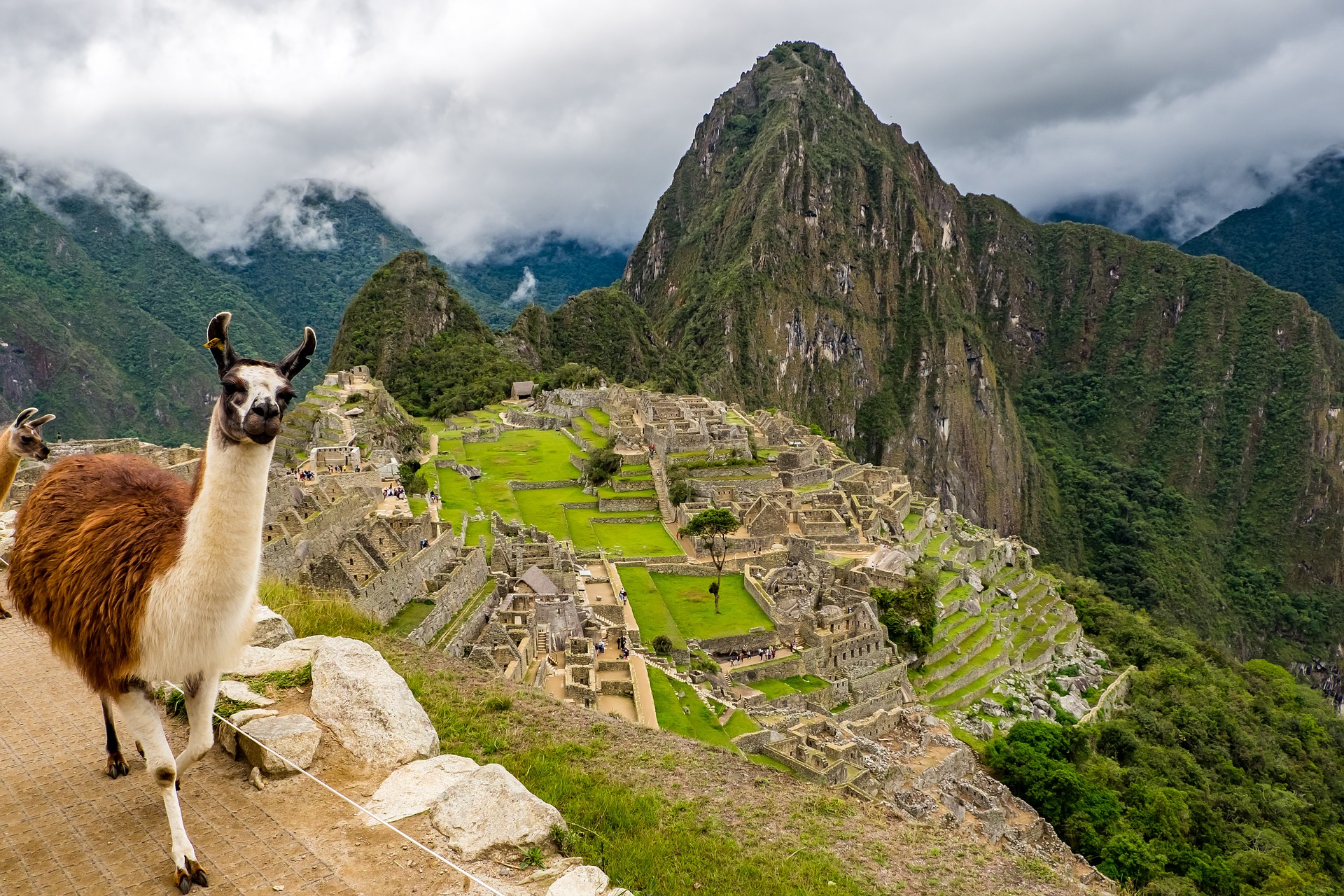
Machu Picchu, the most important monument in Peru, inheritance of the Inca culture
Architecture and plastic arts
There are numerous examples of the virtuosity of the prehispanic builders in Peru. These include, for example, the complex of Chavin or Temples of Tihuanaco, to name the best known. Inca architecture deserves a separate chapter, responsible for impressive architectural achievements such as the Fortress of Sacsahuaman or Machu Picchu, considered one of the seven wonders of the modern world.
The Spanish introduced the urban planification, with cities organized in the form of a checkerboard, and built numerous Civil and religious buildings in the Spanish Renaissance and Baroque style. Later, these European styles will be enriched with local elements, giving rise to a curious style known as "mestizo".
During the colonial period both sculpture and painting followed the European canons, highlighting the so-called Cusco school, the most important in Spanish America. Already after independence the so-called indigenous painting, which had in the figure of Jose Sabogal its maximum exponent.
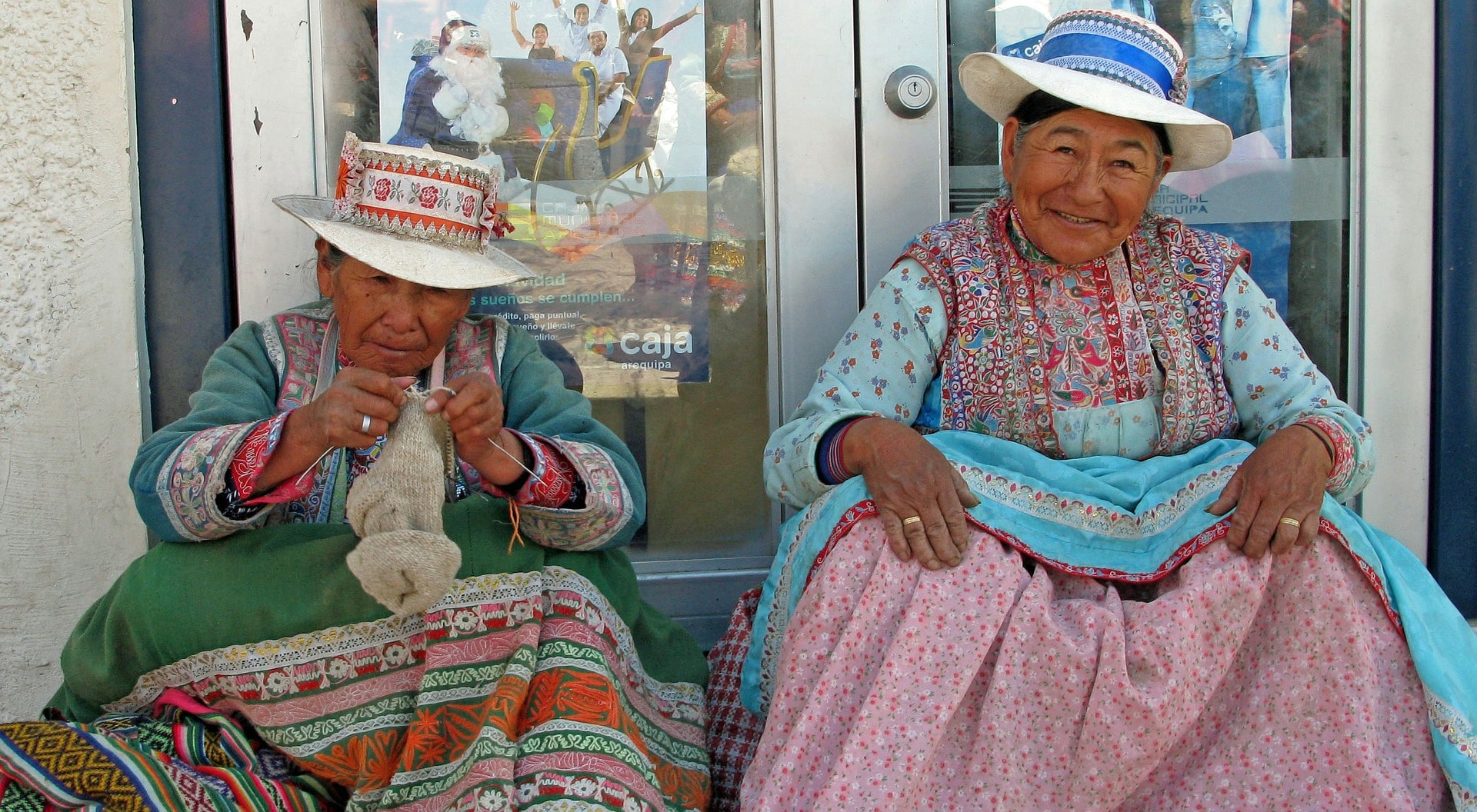
Peruvian women with traditional dresses
La ceramics, textile crafts and goldsmith They were two artistic expressions that reached great levels of perfection during pre-Hispanic times. Current Peruvian crafts collects a good part of these ancient traditions, as any traveler who visits one of the many artisan markets in the country and in traditional dresses can see.
Language and literature
Addition Spanish or CastilianIn Peru there are 46 other languages, all of them indigenous. The most important are the Quechua, spoken by more than 3,8 million Peruvians, and the Aymara. However, most of the country's native languages have disappeared and those that survive (except for the two mentioned above) are spoken by very small groups.
Peruvian literature from the colonial era has prominent figures such as the Inca Garcilaso, perfect example of miscegenation between European and American culture. Already in the republican era, Peru has had great literary figures. The most famous is that of the writer Mario Vargas Llosa, Nobel Prize for Literature in 2010.
Popular Peruvian music and culture
Perhaps music and dance are the expressions where the rich cultural mix of Peru is most vividly manifested.
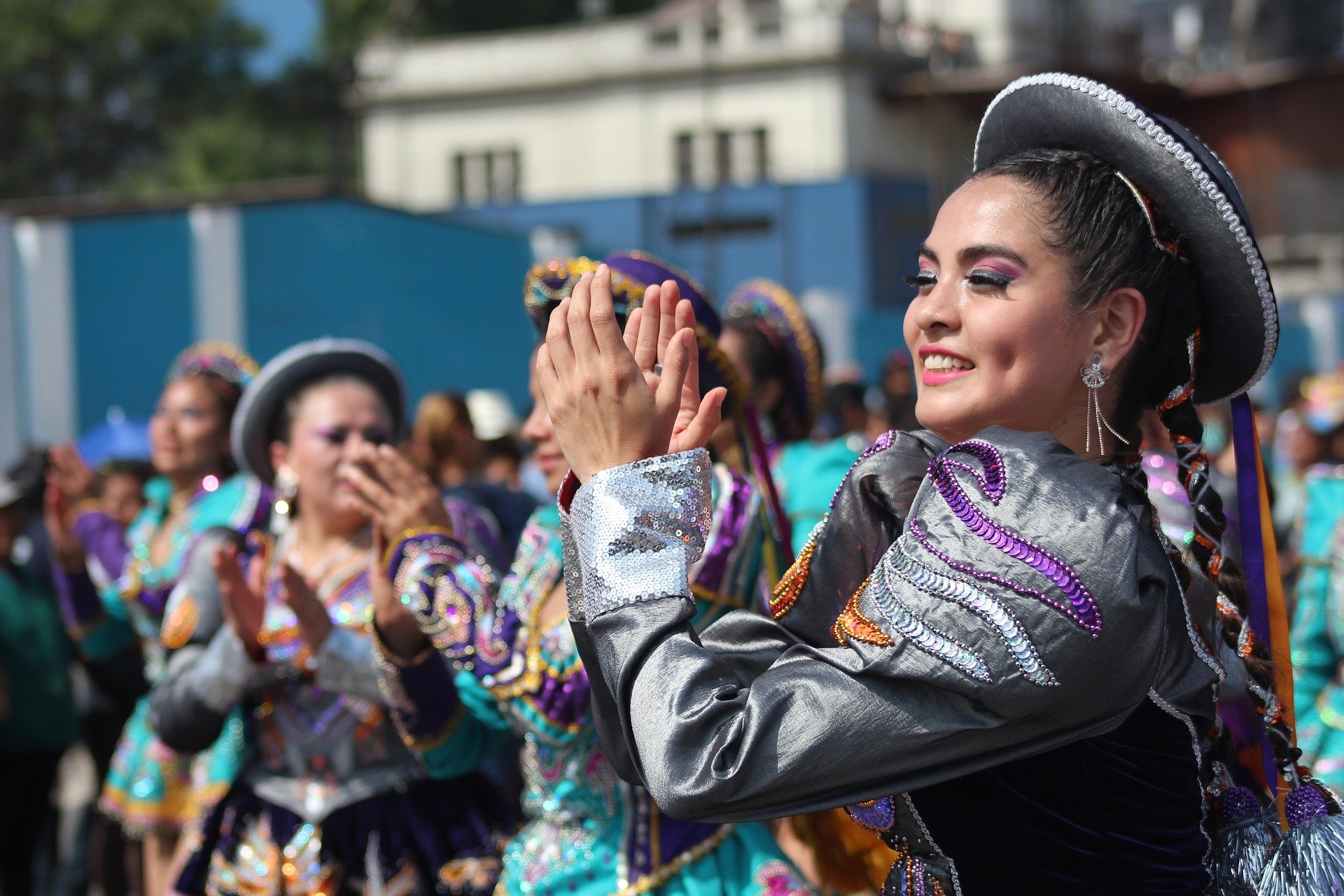
Peruvian traditional dance
La Andean music it can be considered as an authentic relic. Their melodies and instruments have been admirably preserved over the centuries. Even today it enjoys an absolute validity, converted into a symbol of the Peruvian national identity.
On the other hand, other musical expressions of Peru have emerged from the fusion between cultures. This can also be extrapolated to the field of popular dances and dances. It is the case of the Creole music or afro peruvian dance.
Musically speaking, the department of Puno is the most interesting. This Peruvian region is the cradle of numerous dance styles such as the Puno devil, flare wave Puneña gang. On the other hand, the popular Scissors dance and wititi, whose origin is in the southern region, have been declared Intangible Cultural Heritage of Humanity by Unesco.
Gastronomy of Peru
It would be inexcusable to talk about Peruvian culture without mentioning one of the most internationally recognized expressions: gastronomy, praised throughout the world for its quality and variety.
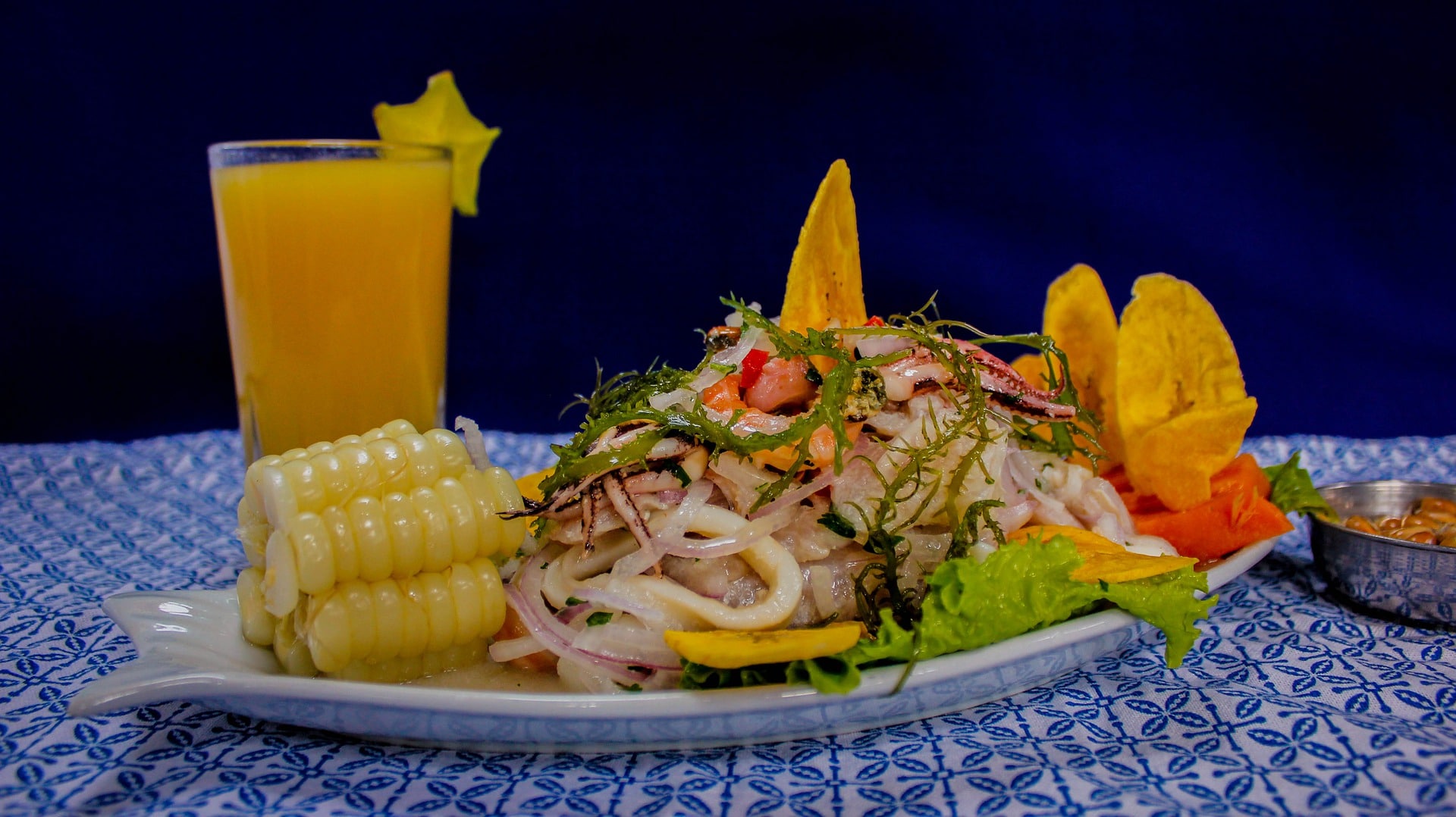
Fish ceviche, star dish of Peruvian gastronomy
Peruvian cuisine has benefited from the influence of the gastronomic tradition from four continents: Europe, America, Africa and Asia. It also has an impressive catalog of food and natural products that grow on its land. They are the basis for preparing the delicious dishes that we all know.
Although the list could be very extensive, we will only mention here some of the most famous dishes of Peruvian gastronomy such as the delicious fish ceviche, chicken chili, Pachamanca or rice Zambito, to highlight just a few delicacies. Also to be included in this list is a drink as emblematic as the chicha morada or, among alcoholic beverages, the popular pisco.